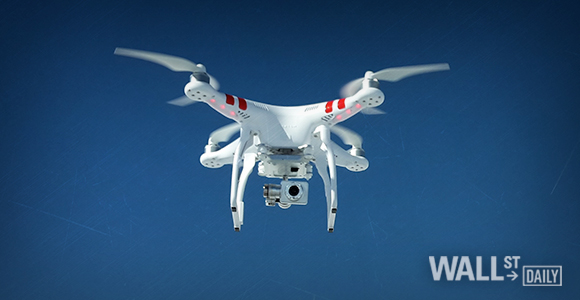
Drones – unmanned aerial vehicles – have been in the headlines a lot lately.
Unfortunately, it’s been for all the wrong reasons: interfering with air traffic, obstructing firefighters from putting out wildfires, crashing into buildings…
There’s hasn’t been enough focus on the good news, which is that the commercial applications of drones continue to proliferate.
And there’s no better example than in the oil and gas industry.
Cut Costs With Drones
The use of drones in the oil industry isn’t exactly new…
Today, drones are becoming increasingly vital as energy companies use them to cut costs and stay competitive in the current, low price environment.
Drones are especially useful for inspecting and monitoring oil and gas companies’ vast array of infrastructure – from offshore oil rigs and pipelines to storage tanks and more – as they’re safer, faster, and more cost effective.
Inspection Drones Take Off
Imagine an oil rig miles out at sea in choppy waters. Roughnecks literally have to dangle from wires to inspect and then log any deterioration in the equipment. And they have to brave flare stacks that belch fire.
Helicopters are needed and ships stand by in case of an emergency. Rig operations are also shut down, costing a company nearly a million dollars per day.













Leave A Comment